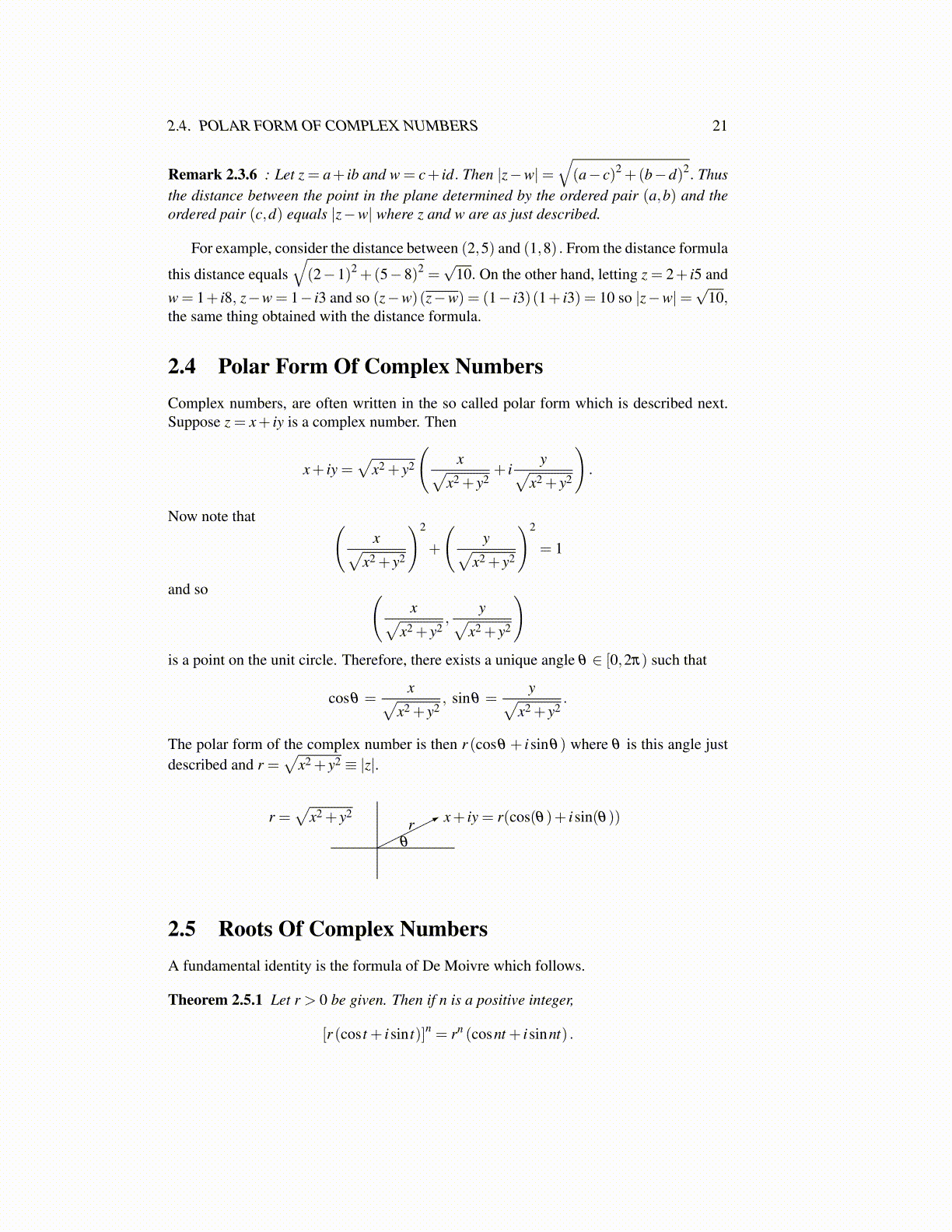
2.4. POLAR FORM OF COMPLEX NUMBERS 21
Remark 2.3.6 : Let z = a+ ib and w = c+ id. Then |z−w|=√(a− c)2 +(b−d)2. Thus
the distance between the point in the plane determined by the ordered pair (a,b) and theordered pair (c,d) equals |z−w| where z and w are as just described.
For example, consider the distance between (2,5) and (1,8) . From the distance formula
this distance equals√(2−1)2 +(5−8)2 =
√10. On the other hand, letting z = 2+ i5 and
w = 1+ i8, z−w = 1− i3 and so (z−w)(z−w) = (1− i3)(1+ i3) = 10 so |z−w|=√
10,the same thing obtained with the distance formula.
2.4 Polar Form Of Complex NumbersComplex numbers, are often written in the so called polar form which is described next.Suppose z = x+ iy is a complex number. Then
x+ iy =√
x2 + y2
(x√
x2 + y2+ i
y√x2 + y2
).
Now note that (x√
x2 + y2
)2
+
(y√
x2 + y2
)2
= 1
and so (x√
x2 + y2,
y√x2 + y2
)is a point on the unit circle. Therefore, there exists a unique angle θ ∈ [0,2π) such that
cosθ =x√
x2 + y2, sinθ =
y√x2 + y2
.
The polar form of the complex number is then r (cosθ + isinθ) where θ is this angle justdescribed and r =
√x2 + y2 ≡ |z|.
θ
x+ iy = r(cos(θ)+ isin(θ))r =√
x2 + y2r
2.5 Roots Of Complex NumbersA fundamental identity is the formula of De Moivre which follows.
Theorem 2.5.1 Let r > 0 be given. Then if n is a positive integer,
[r (cos t + isin t)]n = rn (cosnt + isinnt) .